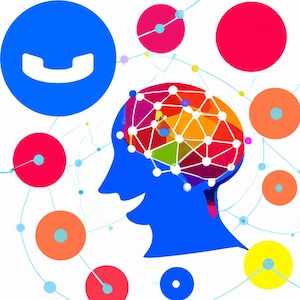
The first neural network: the brain
We know relatively little about how our brain works, but we know exactly how artificial neural networks work, i.e. the software behind various products based on Artificial Intelligence, such as MrCall. We can then compare simple biological “brains” to an artificial neural networks.
The simplest brain: Elegans
At the moment, the brain we know best is that of a small worm called C. elegans. In 1986, all 302 neurons in the brain of a female C. elegans were mapped, and then studied extensively. In 2012, the same thing was done for the brain of male C. elegans, which has 383 neurons. The difference is due to the fact that the male must try to mate with the female, while the female can have children alone.
This coupling is not a simple thing. Although C. elegans is a very simple organism, its way of mating is complex. Yet, it manages to do all this with just a few neurons.
Elegans and neural networks
If we looked at the elegans’ brain as an artificial neural network, we would say that Nature has developed a simple—technically “shallow”—neural network. Shallow networks have only a few layers of neurons.
And so it is for the elegans’ neural network: first there are the sensory neurons, which recognise things around them, for example if there is a female nearby. Then, the information passes to a second group of neurons, and finally to the third group, the motor neurons, which initiate the movements.
There are therefore only 3 layers of neurons. In addition, as in the artificial neural networks we use today, some neurons of the C. elegans are able to remember information and reuse it.
It took Nature a few million years to develop nervous systems like that of the C. elegans, but the apparently simplicity of the of the brain of this little worm must not mislead us: “natural” brains are in any case complex, because they are made up of neurons, i.e. cells, which in turn are capable of analysing information. The neurons of artificial neural networks, on the other hand, are very simple, and in fact an artificial neural network of 300 neurons does very little!